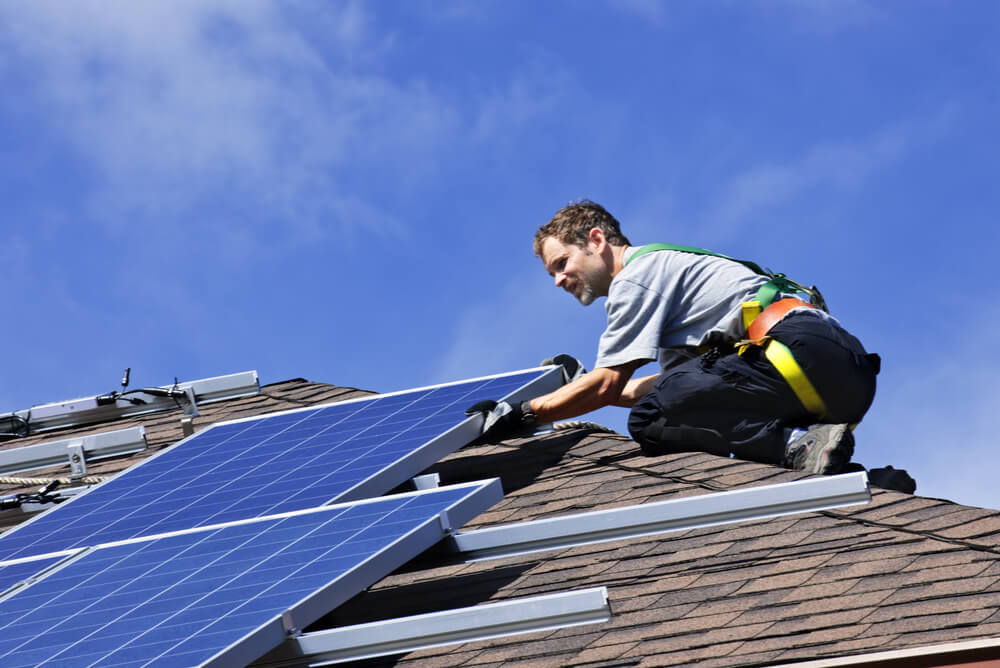
Compare the Market is warning Victorian households that now is the time to change their solar habits, with the Essential Services Commission (ESC) forecasting that minimum feed-in tariffs could be slashed by as much as 32% in 2023-24.
In its draft decision, which is currently seeking feedback from stakeholders before a final determination is released in the New Year, the ESC proposed flat minimum feed-in tariff for the 2024–25 financial year at 3.3 cents per kilowatt hour (kWh). Proposed time-varying minimum feed-in tariffs range from 2.1 to 8.8 cents per kWh.
It’s significantly less than the current rate, which is 4.9 cents per kilowatt hour for flat rates and between 3.9 cents and 11.3 cents per kilowatt hour of electricity exported, under the two current time-varying tariff options.
Head of Energy at Compare the Market, Meredith O’Brien, said while the proposed rate for the new financial year may be a shock to Victorians with solar, signs have been pointing towards a reduction for some time.
“Many households are already seeing the rate they’re credited for exporting solar electricity to the grid through feed-in tariffs decline and it’s looking likely that the trend will continue in 2024-25,” Ms O’Brien said. “With wholesale electricity prices dropping and more households generating solar power and exporting it back to the grid, it makes sense that feed-in tariffs will fall.
“It’s also to drive customers to change their usage habits to increase usage of their solar electricity at the time of generation, plus invest in a battery to avoid overloading the grid.
“Similarly, we know that the ‘sun tax’ is coming, where households could be charged for exporting solar electricity at certain times from 2025. The new change is known as two-way pricing and households could be charged a fee to export during low-demand times, such as the middle of the day when peak solar electricity is generated. However, you could earn more by exporting solar power when demand is high, such as in the afternoons and evenings – providing you have a solar battery. Ultimately, it will be up to retailers to determine these exact times.”
The ESC sets the minimum feed-in tariffs that retailers must pay solar customers to protect them from being credited too little for the electricity they send back to the grid. According to Ms O’Brien, it’s important to know that there will still be great solar deals on offer – even if the minimum feed-in tariff declines.
“While this is just a draft, we do know that retailers can set their own feed-in tariffs, meaning the onus is on households with solar to compare and switch to electricity plans that offer better deals,” Ms O’Brien said. “However, with the sun-tax impending, it’s a timely reminder that you’ll usually see the best value from your solar system if you’re using the electricity it’s generating.
“Now’s the time to get into the habit of using your solar electricity during the day when demand is usually the lowest. If you don’t use solar electricity during the day, consider investing in a solar battery if you don’t already have one so you’re not relying on energy from the grid at night.
‘However, be mindful that solar batteries are an investment and can cost anywhere from a few thousand dollars for a smaller system to amounts much higher for systems with more storage and inverter chargers.
“You can also use timers and run power-guzzling appliances such as dishwashers, washing machines and dryers during the day, charge your electric vehicle or charge laptops, mobile phones, tablets and other devices when your solar system generates power.
“Households may also be able to run pool pumps and air conditioners during the day, but revert to cost-effective methods of cooling like using fans in the evening during summer.”
The ESC is currently accepting feedback on its draft decision until 22 December. Victorians will know on 28 February 2024 what the final decision is, before the new minimum feed-in tariffs come into effect from 1 July, 2024.
Ms O’Brien’s top tips for making the most of your solar.
- Do your research: You will undoubtedly stand a better chance of finding the best electricity plan with the best solar feed-in tariff by doing your research, shopping around, and, most importantly, comparing your options. A plan may boast cheaper electricity usage rates but a poor solar feed-in tariff or vice versa, so weigh up what’s going to give you the lowest electricity bill.
- When comparing electricity plans, keep an eye out for the following:
- If, and how much, you’ll be credited through the solar feed-in tariff by your retailer
- Any conditions, such as any maximum exported kWhs per day, month or year.
- Any conditions on the size of your system (you may be ineligible for a plan if it’s limited to a certain size of a solar system)
- The price of your daily supply charge and general usage rates (usage tariffs)
- Any discounts or special offers available (e.g. discounted rates for the first 12 months of your plan) for any usage you need from the grid
- The fees that might be applied to your contract (e.g. connection fees if you are moving house, exit fees if you are breaking contracts – the latter not applicable to residential customers)
- Other plan features, like the billing options.
- Claim any rebates: Each state and territory will offer specific rebates and cashback when you invest in solar. Do your research and make sure you follow your state’s instructions to successfully claim your rebate. The Small-scale Renewable Energy Scheme is available across all eight states and territories and offers financial incentives for Aussies (both individuals and small businesses) to install eligible small-scale renewable energy systems including solar panels, small-scale wind and hydro systems, air source heat pumps, and solar water heaters.
- Use your solar during the day when the sun is shining: The daytime is the best time to use your solar power, as the sun is already doing the work of generating power for your home.
- Position your panels correctly: Solar panels generate electricity through sunlight during the day, so ideally, you’ll want your panels to get as much sunlight as possible – regardless of whether you choose to use, store or export electricity. We know that panels facing north typically get the most sunlight, which means they’ll generate the most power. If your roof’s orientation doesn’t allow for this, remove any obstructions to increase solar generation.
- Invest in a battery: To store the power generated by your panels during the day and minimise the cost of drawing electricity from the grid.
For more information, please contact:
Phillip Portman | 0437 384 471 | [email protected]
Compare the Market is a comparison service that takes the hard work out of shopping around. We make it Simples for Australians to quickly and easily compare and buy insurance, energy and travel products from a range of providers. Our easy-to-use comparison tool helps you look for a range of products that may suit your needs and benefit your back pocket.








